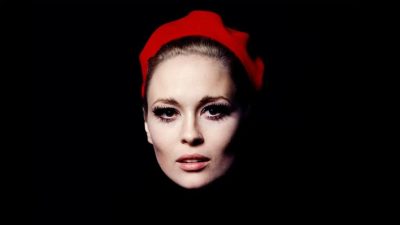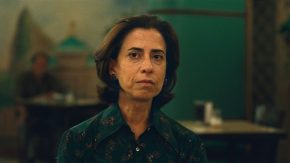Dancer and choreographer Dóra Barta, who has received several prestigious awards and the title of Merited Artist, founded her own company in 2008 under the name Badora Dance Company. This time, the independent theatre company is preparing a monumental, disturbing and philosophical show entitled Falling Out of Time, which will be performed at Müpa Budapest on 2 and 3 November. I spoke to Dóra Barta about the background and the making of this performance.
What has been the creative process behind Falling Out of Time?
What usually happens is that I’m pondering about certain subjects a lot, and they are accompanied by seemingly random related inspirations of any kind, until it all creates a big picture. In this case, I was thinking about the nature of time, and suddenly I came across Osvaldo Golijov’s contemporary music Falling Out of Time. It’s a beautiful, instrumental, accessible yet contemporary piece, and I knew immediately that it would be great to work with. Then, after the music, I also got to know the literary material that inspired Golijov, a book of the same title by a writer called David Grossman, and I could see more and more clearly how to bring the ideas on my mind to the stage.

Dóra Barta
What interests you most about time?
Whether it exists? In David Grossman’s book, the plot is about a parent losing a child: such a severely traumatic experience can really throw you out of yourself and out of time. On reflection, it can be seen that in certain extreme states of mind, for example in the aftermath of a trauma, we interpret the whole world differently, including time, the ordinariness of life, the quality of our world. If it were treated purely as a textual theatre performance, it would have a tragic, deep-toned, psychological character, but we, as a movement theatre company, did not quite work with that. Rather, we are showing how one enters into this previously unknown system and how one experiences time in a new way, in which pain can even become a source of a kind of transcendence, ascension, purification.
We ask questions about our relationship to time, about what is beyond the cliché of ‘past-present-future’, whether time is in control of us, or whether we have the leeway to, for example, experience certain moments in prolonged exposure. I know that after the covid pandemic and in the shadow of wars, anxiety has become a basic experience for many people without a specific personal tragedy, and many people do not want to face it even in the theatre. But I think theatre is there to make us delve into what is happening to us and within us, and even to see ourselves in a new light. For the viewer, consolation is a realm where loss is not merely a void, but a vital force in its own right.
How did you develop the choreography and set design for this highly philosophical material?
Any time I create a choreography in my head, I already see the setting and the images clearly, and in this case the set was specifically designed for the Müpa’s huge facilities. The world of the performance is minimalist in nature: a clean, large space that can be structured in a varied and effective way, displaying the very particular nature of time. The strong, clear gestures of Falling Out of Time can be very well expressed here, just like the way how a single dancer seems to be so small in the vaste space. The staging of a show always has a strong influence on its creation: I don’t use one specific idea no matter where the invitation comes from, as not all pieces can communicate from all kinds of spaces.

(c) Müpa
Who will be on stage?
Members of the Badora Dance Company. They do not play specific roles from the literary text, but rather appear as characters that are born from it, yet both individual and more general. By the way, our company works with a project approach, the dance artists are always chosen according to the needs of the production. Working with my own company means that I have the greatest freedom of expression, I can put all my creative imagination, energy and vision into the piece. I always work a lot on the formal language of choreography, because dancers can work with their bodies in as rich a range and virtuosic a way as the best musicians work with their instruments. This spectacular imagery, the music that creates a special atmosphere, and of course the theme itself, all take the viewer on this mythical journey and can even open up new, previously unknown dimensions.



























Comments